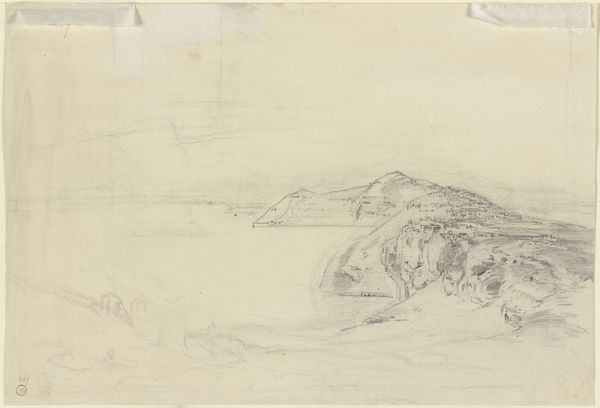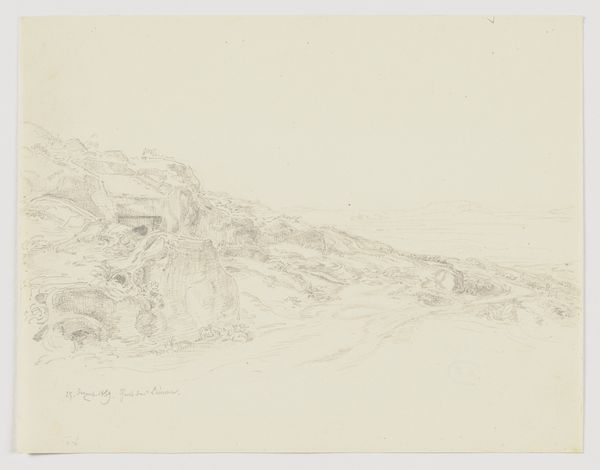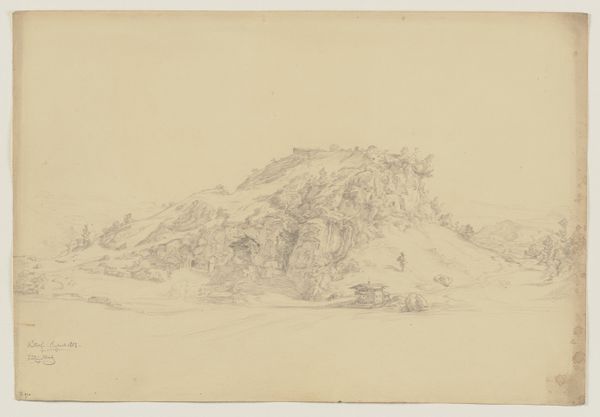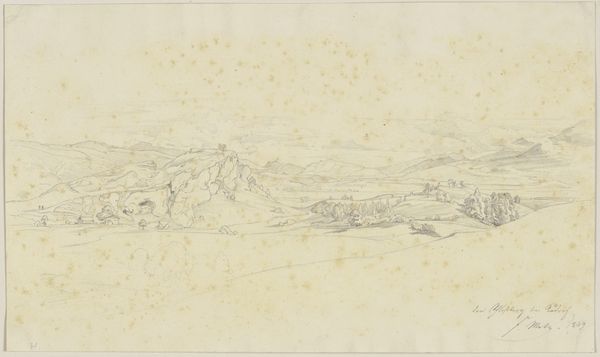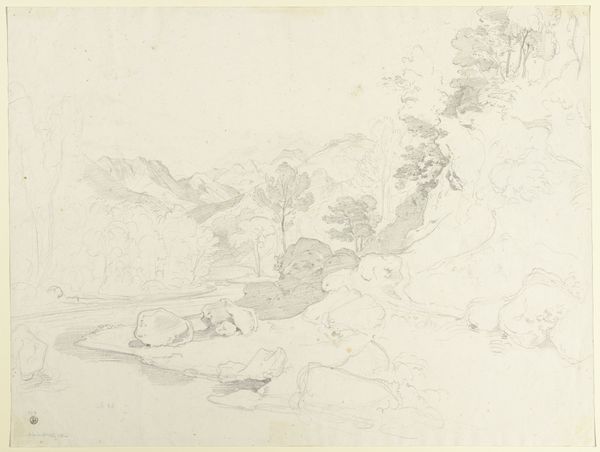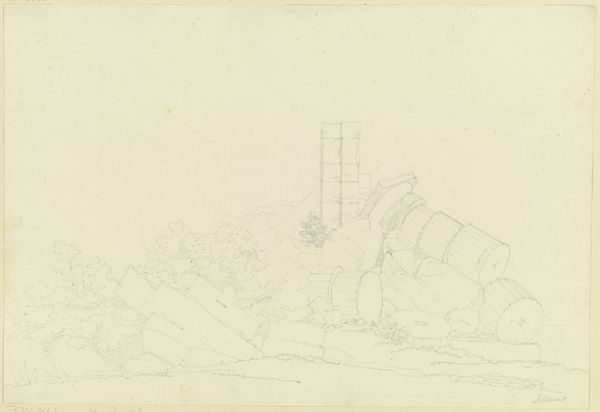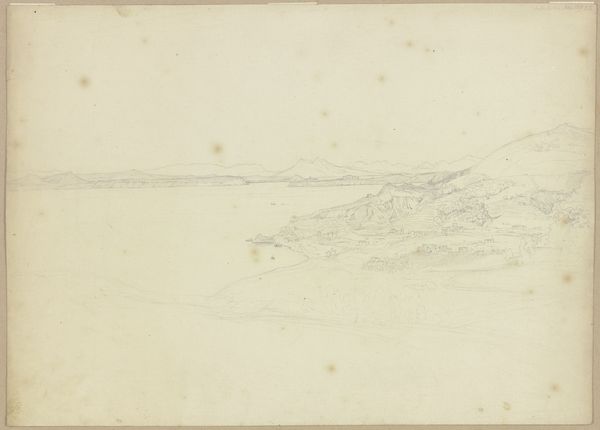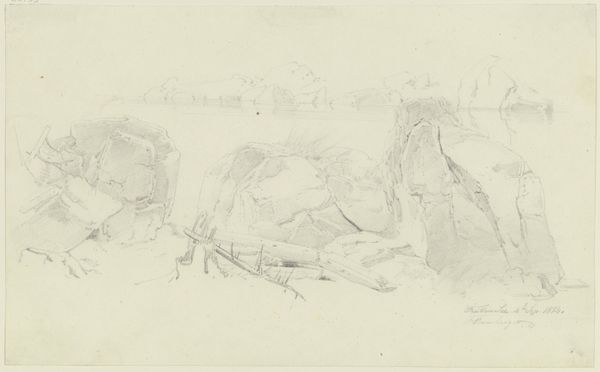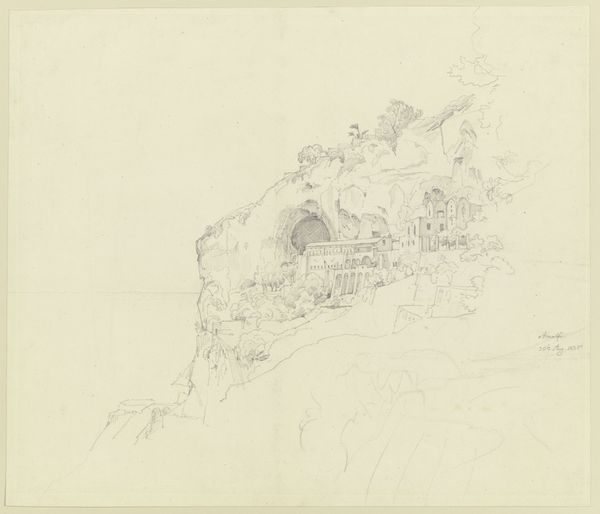
Copyright: Public Domain
Editor: Here we have Johannes Thomas' "View on Amalfi," created in 1823 using pencil and paper. It's delicate, almost ethereal, with this looming rock face dominating the foreground. What strikes you about this piece? Curator: This work exists at an interesting point in history, doesn't it? Consider the social context. By 1823, the Grand Tour was well underway; affluent Europeans, especially the British, were traveling to Italy to experience its culture and landscape. How do you think that phenomenon shapes our understanding of this image? Editor: Well, knowing it was part of the Grand Tour tradition, I can see how the artist might have been catering to a certain audience – those interested in romantic landscapes and picturesque views. The focus on capturing the essence of a specific place, Amalfi, feels intentional. Curator: Precisely. And think about the rise of landscape painting as a genre at this time. Artists weren't just documenting, they were also crafting narratives. This drawing, with its romantic depiction of nature and implied sublime, plays into that. Note the scale: what’s emphasized, and what is minimized? Editor: The large rocks and cliffs in the foreground dwarf the human elements, the small buildings clinging to the cliffside. I guess that highlights the power of nature. Curator: Indeed. This approach romanticized and idealized the Italian landscape, presenting it as both awe-inspiring and picturesque for an audience keen to possess its image and participate in a culture of travel and collecting. What kind of narratives do you think this work encourages? Editor: I hadn’t thought of it like that, it feels like a constructed view. It really shifts my understanding of these drawings! Curator: Absolutely. These images did much more than record scenery; they helped establish and maintain particular ideas about places and the power dynamics inherent to viewing them. It encourages critical inquiry beyond the aesthetics to understand the social influence behind their creation and circulation. Editor: Wow, I'll definitely look at landscape art differently from now on. Thanks for that deeper context.
Comments
No comments
Be the first to comment and join the conversation on the ultimate creative platform.
